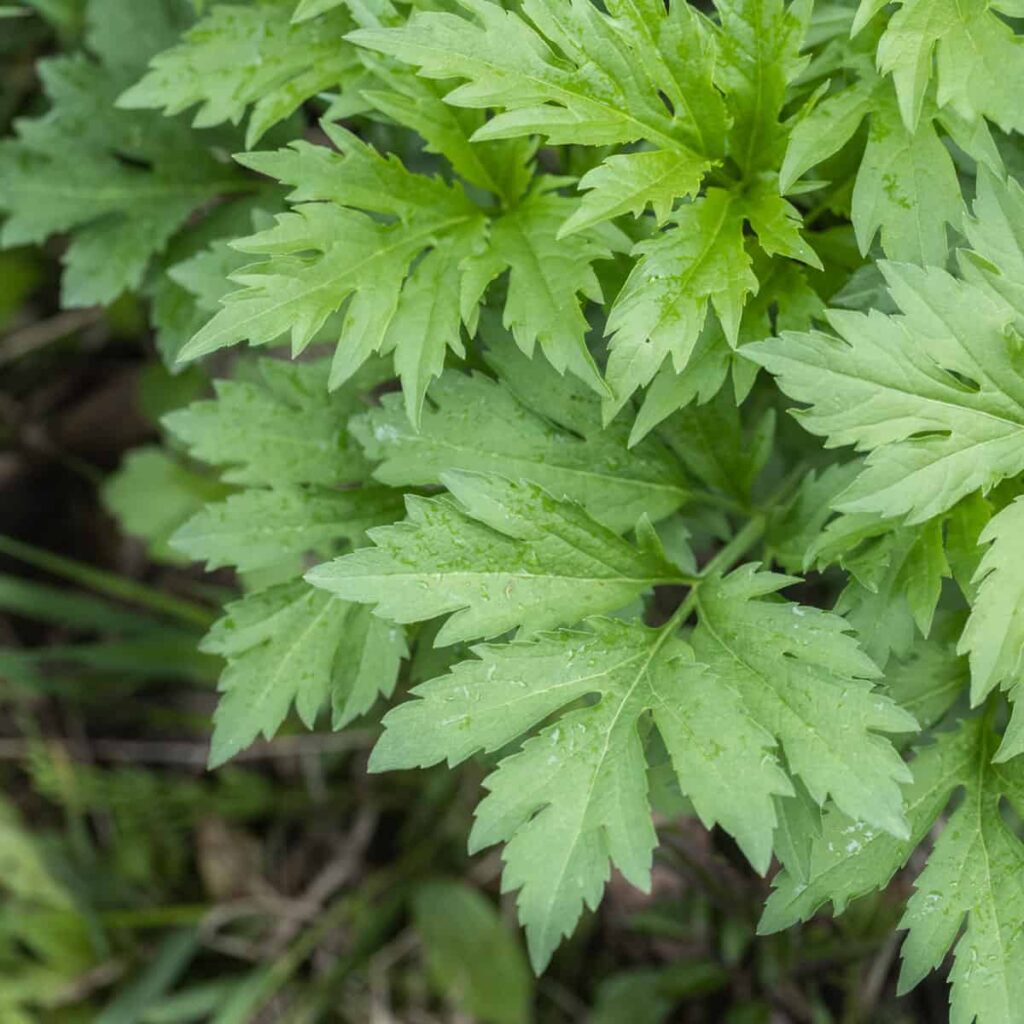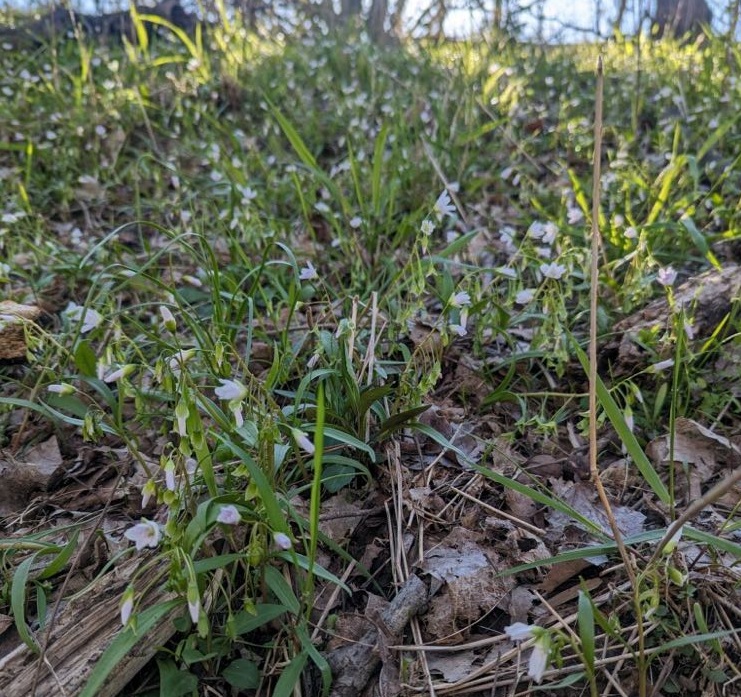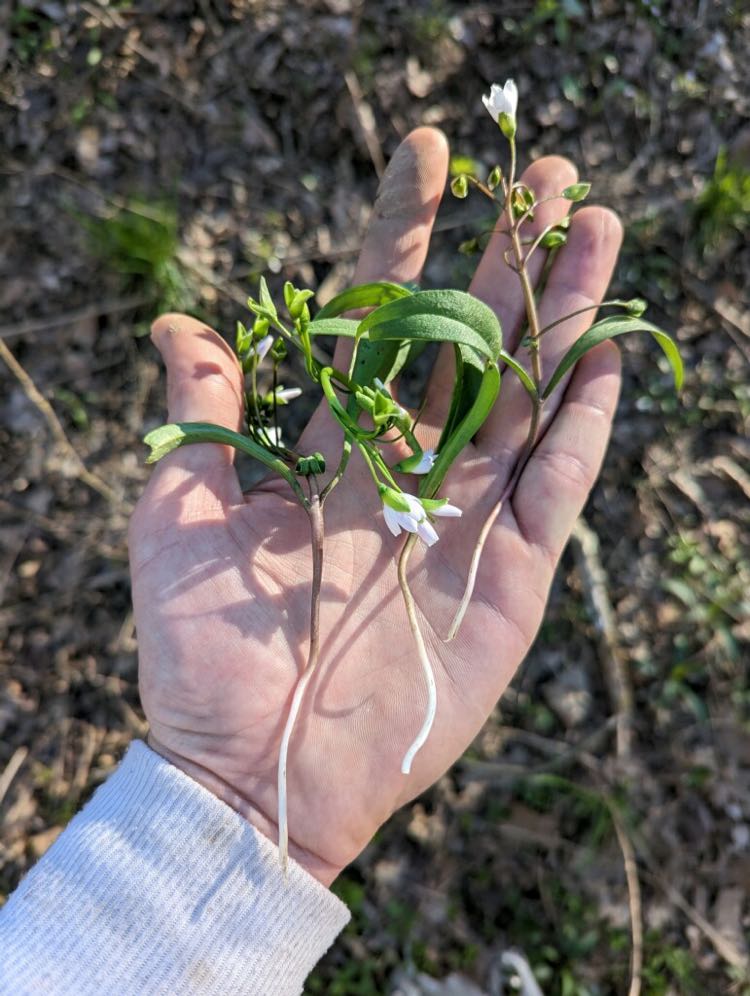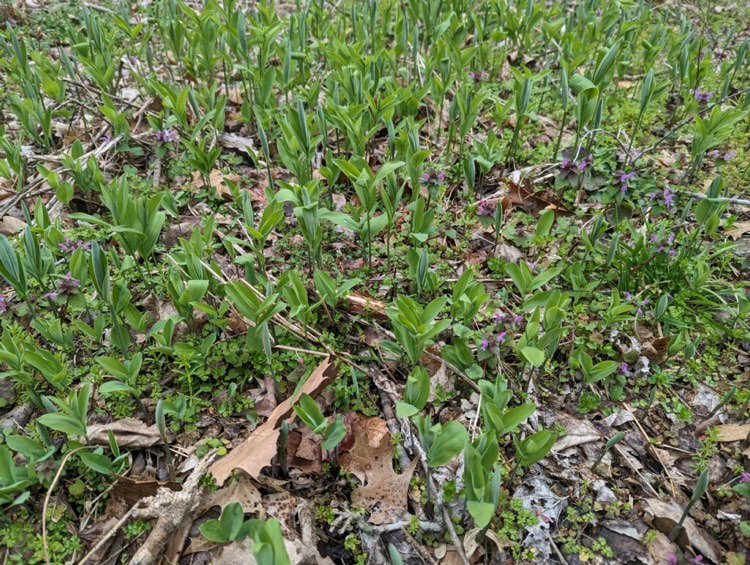Peak wild greens season is eagerly anticipated across our hemisphere. An all-too-fleeting moment of nutritious, delicious gourmet abundance from early to mid-spring, the spring greens of field and forest flourish, set seed and fade away before gardeners pick the first asparagus. In Kentucky, we enjoy dozens of unique species which fortify and nourish the body, each with a unique range of health affirming properties, broad spectrum vitamin and mineral content, and delightful flavors.
Our Wild Greens formula captures this fleeting, ephemeral peak of wild greens season into stable extract form, ready to enjoy all year round. We carefully handpick several of the most nutritionally dense species of greens, combined to form a carefully balanced powerhouse of minerals, vitamins, flavonoids and soothing, digestion supporting complex polysaccharides which promote ideal probiotic composition in our guts. In addition to digestive support, this formula contains herbs traditionally known to promote immune wellness, liver and kidney health and radiant skin. Ensuring that we get enough healthy minerals and vitamins is one of the most important dietary considerations, and helps to support every bodily system in peak operation. Each of the herbs carefully chosen as components of this formula offer further unique benefits and virtues.

Wild Nettles: While many folks are familiar with the common garden Nettles, Urtica dioica, a European species, we utilize our locally abundant wild species Urtica chamaedryoides. Loaded with essential vitamins, minerals and deep green chlorophyll, this traditional food, medicine and fiber plant offers a strong central pillar in this unique blend. Renowned for its robust flavor, Nettles is used traditionally to help dispel seasonal allergy symptoms, as an anti-inflammatory herb and powerful antioxidant to help the body resist stress and disease.
Spring Beauty: A couple decades back, I remember reading in a popular field guide to foraging that the eastern species of Claytonia were too rare and too small to justify picking for any wild foods purposes. I can safely say that the author had clearly not spent much time amongst our Kentucky Spring woodlands! Our populations of both Claytonia virginica & caroliniana are so healthy and vigorous that they frequently occur in vast ground-covering stands across hillside after hillside, tucked safely under our deciduous emerald canopy. This is actually a fairly common occurrence regarding Kentucky botany. While a certain plant might be rare in Massachusetts, Colorado or Michigan, it certainly doesn’t mean that this plant is necessarily rare in Kentucky :-). We’re including a few pictures to demonstrate how large and succulent our spring beauties get, in addition to how they cover entire hillsides.

While the bulb-like root (technically a corm) was savored by the tribes across this region as a sweet, starchy delight, we only harvest the superfood-status leaves for our purposes. The plant grows back very successfully from its starchy storage root. In fact, the large patches of Spring Beauty which we’ve tended and foraged for decades seem to grow fuller and more robust over time with our care and affection. While loaded with nutrients, we love the rich complex polysaccharide content of these sweet, tender leaves. In a way similar to aloe vera, these healthy compounds soothe our digestive tract and help promote increased absorption of all those desirable minerals and vitamins. Known as “prebiotics”, these complex polysaccharides help to feed the healthy gut probiotics, which are known to be essential to life and wellness.

Sochan: Sochan is a Cherokee name for this amazing and under-utilized edible relative of Echinacea. Rudbeckia laciniata, also called cut leaf coneflower, is one of our very favorite wild foods. The leaves have the rather rare quality of remaining tender and delicious throughout their growing season, well into the summer! While almost all the other wild greens become tough, bitter or otherwise inedible, it’s a real gift to have the blessing of gentle Sochan. The flavor is sublime, somewhat sweet and aromatic, delicious enough that once accustomed, it’s hard to revert back to the other common greens of commerce whenever the growing season does finally grow to an end! With complete respect for this plant as an important traditional food and medicine amongst the Tribes of our region, we take great care to pick lightly from our vast stands, and to spread the abundant seeds as they ripen in the late summer and fall!
This plant, like so many others, was greatly respected amongst the original Cultures of this place, but is largely forgotten or abandoned here in modern times. While there is certainly a very recent small renaissance amongst herbalists and foragers, we choose to keep it at the front of our minds that this ancient food plant was greatly important to many of the Tribes, and that there is a careful way to respect this fact while harvesting and promoting the increase of wild stands of Sochan. We suggest cultivating your own patch to explore this amazing wild food! In fact, this plant would have certainly been cultivated and tended for thousands of years along with other diverse crops by the people inhabiting this place before colonists ever arrived. We find it occurring in areas known to be large population centers and growing in stands amongst dozens of other valuable food crops that would have been central in the diet of these advanced ancient cultures.
While standing strong with Nettles and Spring Beauty for abundant nutritional value, Sochan as a relative of Echinacea, offers an ideal and gentle boost to immune health, to our bodies ability to resist disease and infection. Further, as a mild lymphagogue, Sochan helps to flush toxins safely from the body. As a “food herb”, we appreciate that these medicinal effects are deep and sustaining, while being gentle and safe enough to be used as a daily routine.
Solomon’s Seal: The shoots of Solomon’s Seal, also known as Polygonatum biflorum are one of the earliest wild foods of great substance to emerge from the wintry soils. Exceedingly delicious, this member of the asparagus family rises well before asparagus and in this authors opinion, completely dominates its common cousin in the categories of flavor and texture. Having a rich and slightly nutty flavor reminiscent of sweet peas, Solomon’s Seal shoots are a powerhouse of nutrition and gentle food type medicine. While one could celebrate its dietary values for pages, I primarily want to highlight the power of Solomon’s Seal to promote gut health. In traditional herbalism, we consider this herb to be of great value to reduce inflammation throughout the body, but especially in the digestive tract. We further value the ability of this herb to promote healing of wounds throughout the digestive system as well. While we typically utilize the root of the plant in herbal medicine, the spring shoots carry all of these wonderful medicinal effects in a gentle and safe bundle along with its unique additions to the nutrient profile.

Kentucky Mint: Famous as the unique flavor of a traditional Mint Julep, there is a unique form of peppermint common throughout Kentucky that often gets identified commercially as ‘Kentucky Colonel Mint’. Peppermint essentially being a hybrid between wild water mint and European spearmint, Mentha x aquatica occurs in spring fed streams throughout Kentucky. Each stand has its own unique flavor notes, since the amount of wild mint vs spearmint (amongst others since Mentha spp. readily hybridize) in each stand varies from place to place. The variety we utilize in the Wild Greens formula comes from a pristine limestone spring-fed stream flowing in our local woodlands, and has what we find to be a particularly delightful aroma and flavor. Beyond ‘sweetening’ the flavor profile of this blend, of course mint is as much cherished of a digestive herb as any other we can name. Valued as a soothing digestive herb safe enough for children, we find that a bit of wild Kentucky hybrid mint is the perfect final touch of this carefully crafted nourishing blend!




